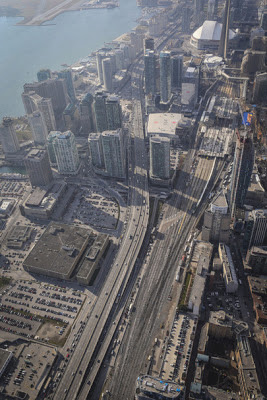While all eyes were looking skyward for fallout from the GTA’s
softening condo market in November, sales of new single-family homes
plummeted to lows not seen since the recession, as prices soared almost
17 per cent year over year, according to a new study.
Total new home and condo sales to the end of November this year were
16 per cent below the long-term average across the GTA. But the biggest
decline — some 38 per cent — has been in the sale of detached,
semi-detached and townhouses, according to a report released Wednesday
by market research firm RealNet Canada.
Condo sales were down just seven per cent over historic averages for
November — although they fell a whopping 59 per cent compared to the
same month in 2011, the tail end of what was record year of 28,000 new
condo sales across the GTA.
Three new condo launches in particular buoyed highrise sales numbers
this November, says RealNet, led by Tridel’s Ten York project in the
waterfront area, which is considered an important bellwether of the
softening market. Some 85 per cent — 596 of 694 — of its preconstruction
units put up for sale Nov. 3 sold within the month, says Tridel vice
president Jim Ritchie.
The RealNet study provides some of the best evidence yet of the
growing gap between what’s become, just since 2011, the tale of two
housing markets across the GTA — new condos and new low-rise homes,
which includes detached, semi-detached and townhouses.
The average price of low-rise homes hit a record $625,473 in November, while new condos averaged $437,264, says RealNet.
While the gap between houses and condos has traditionally averaged
about $78,000, it has soared to $188,000, largely just in the last 18
months, says George Carras, president of RealNet, which provides new
housing market analysis for the Building Industry and Land Development
Association (BILD.)
“Sales of low-rise homes in November were the worst on record next to
the gloom of November 2008, when we weren’t sure if the world’s
financial system was going to hold together or not,” says Carras, citing
scarcity for the fact that prices soared to the point that they,
combined with tighter mortgage rules, pushed down sales in November.
The scarcity includes a shortage of develop-ready land for new
subdivisions caused by a lack of municipal roads, sewers and other
infrastructure, as well as the fact that thousands of hectacres of
future-growth areas within the provincial greenbelt are tied up in
disputes at the Ontario Municipal Board, says Carras.
That supply pressure, at the same time the GTA is seeing a “mini baby
boom” among echo boomers, could push up new home prices an average 15
per cent a year, says Bryan Tuckey, president and CEO of BILD.
“In Vancouver, the gap has grown to $700,000 between a condo and a
detached house. Vancouver is about 15 years ahead of Toronto in terms of
the maturity of its intensification policies and their impacts,” says
Carras.
“That city is between the water and the mountains. Here we’re between
the water and policy mountains and the same impact is starting to
show.”
But John Stillich, former executive director of the Sustainable Urban
Development Association, says too many developers remain fixated on the
two extremes of new housing — high- and low-rise — instead of a new
middle ground of two- or three-storey housing types that allows GTA
residents to “live sustainably on the lands that we do have.”
“It’s not about a scarcity of land. It’s about how you use the land.
The development industry could probably build twice as many
ground-related houses if they started thinking in a completely different
way.”

No comments:
Post a Comment